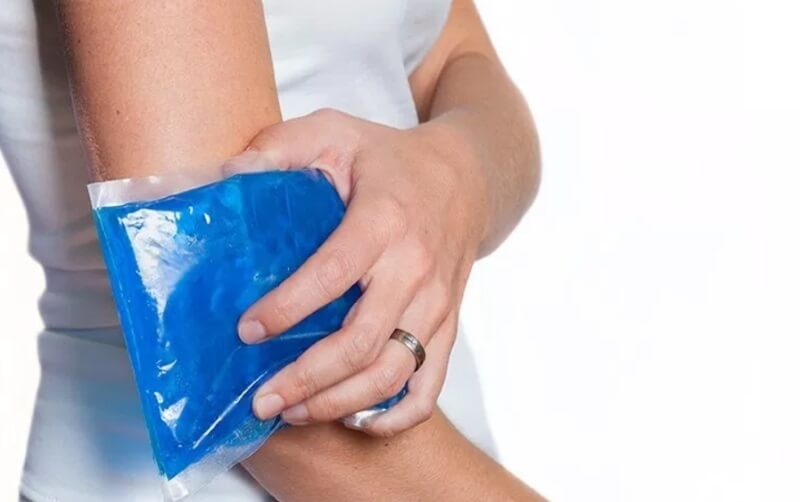
Truth be told, both types of temperature therapy have a role in pain management. And those roles are quite different. There are, however, instances in which contrast therapy (alternating heat/cold) is indicated.
Let’s get down to the nitty gritty and talk about heat or ice: what’s better, when?
Acute Injuries Vs. Achy Muscles
The general rule of thumb is that ice is to be applied immediately after an injury, to soothe pain in superficial tissue. Ice provides relief by reducing pain from inflammation and swelling.
If you’ve pulled a muscle, applying ice is your first line of defense. But more deeply-rooted issues (runner’s knee, for example) in more profound levels of bodily tissue won’t respond to cryotherapy (ice).
Thermotherapy (heat) is best applied for muscle stiffness and aches. In the case of chronic pain (especially when it emanates from the back), patients report hypervigilance, anxiety and tension. Overly sensitized by long periods of intermittent pain, heat has a soothing effect which serves to mitigate the pain.
The sensation of heat also soothes the anxiety and stress associated with chronic pain.
Contrast Therapy
Alternating cryotherapy with thermotherapy is used to treat injuries and to help in the recovery process. Many athletes use this therapeutic model. Highly stimulating, the technique is dynamic and while not empirically proven, is used by sports medicine professionals, also.
Things to Keep In Mind
It’s important to understand that both types of temperature therapy can exacerbate the situation, when improperly deployed.
Heat, for example, can make inflammation worse. And ice can similarly make matters worse, if your muscles are stiff or tight.
Common sense indicators apply here. Someone who’s already cold doesn’t want ice put on their injury. Someone who’s overheated, similarly, doesn’t want more heat applied to their body. In situations like these, the injured person’s brain will perceive heat/cold as threats and their nervous system will respond accordingly, making the pain more intense.
Muscle pain may easily be mistaken for an injury. The impulse is to ice the pain when what it really needs is heat. This occurs frequently with neck and low back pain.
A fresh injury does not need heat. The injury is inflamed and adding heat is just going to make it hurt even more. Heat does not need more heat. You’ll be making the swelling and inflammation even worse.
Muscle Injuries and Strains
If you’ve torn or strained a muscle, ice is usually the best course of action. But this therapeutic response should only be applied for the days immediately following the injury.
Clear trauma to the muscle during intense physical activity may produce muscle injury. The muscle, in this instance, will respond to ice. But after the first few days, switch to heat to soothe the tissue.
At this point, it’s important to tell you that heat and ice are only triage strategies. They’re probably not going to resolve a serious injury. They will, however, contain the pain until you can get to a medical professional for treatment.
Need help with an injury? Contact us.














